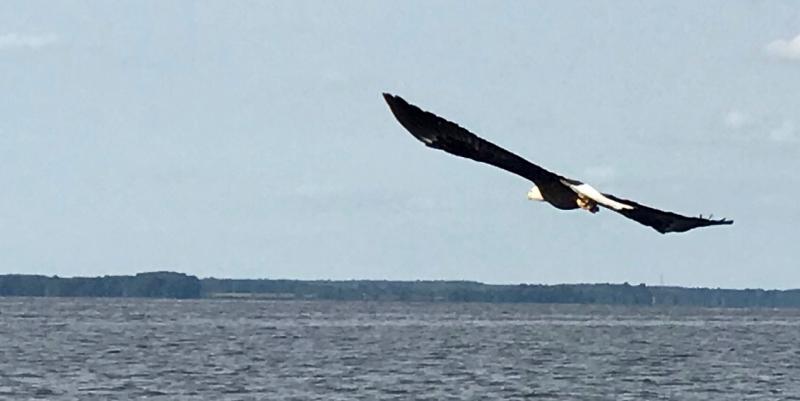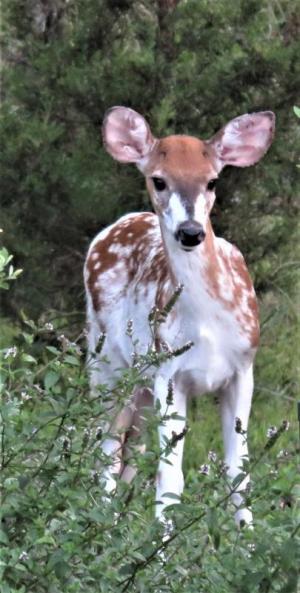DELMARVA WILDLIFE: Piebald fawn, eagle, wolf spider with babies
The wildlife in Sussex County and across Delmarva can be an endless source of entertainment, especially in this time of coronavirus when people are spending more time outdoors. Richard and Peggy Martin’s property on Lewes Beach results in lots of wildlife photos sent my way. Richard recently sent this photo of a white-tail deer fawn with the piebald condition. According to information gleaned from the Internet, piebald is a word derived from pie as in magpie - a black and white crow-like bird primarily of the west - and bald from the white spots exhibited by the mammals that exhibit this condition. Piebald is a genetic mutation the results when both parents have the recessive trait for piebaldism. It’s most common in horses - piebalds often called paints - and in deer. The piebald condition can also show up in humans and results in areas of unpigmented skin most noticeable in darker-skinned persons.
In deer though, unlike in humans with the condition, piebaldism can also result in a bowing of the nose, an arched spine, shorter than normal legs, a shorter lower jaw and internal organ deformations. These problems reportedly result in shorter than average lifespans for piebald deer. Less than two percent of the deer population exhibits piebald characteristics.
In the Lewes area, there must be a lot of adult deer with the recessive gene for piebaldism. They seem to be a constant feature of our landscape, especially in recent years. Maybe that’s another result of having a large and concentrated population of deer in Cape Henlopen State Park and the surrounding forests and fields.
Two other recent wildlife photos here. One is a bald eagle soaring low over the waters of the lower Chester River. The eagle was perched on a green navigational can surrounded by schools of small menhaden and squawking gulls. I took his photograph when he decided it was time to leave the perch.
The other photo comes to me from Lewes resident B.J. Clark. It reminds me of why there are so many spiders in the world. Here’s what BJ said about the photo. “This is a Momma Wolf Spider. She crawled out between the spaces of our deck on Saturday afternoon to catch a few rays. On her back is her pack of babies. This I had never seen before but apparently it is not that rare to find but is pretty unique in the spider world. Still the light was right and she kept still long enough for me to use a macro lens to capture the photo.”
























































